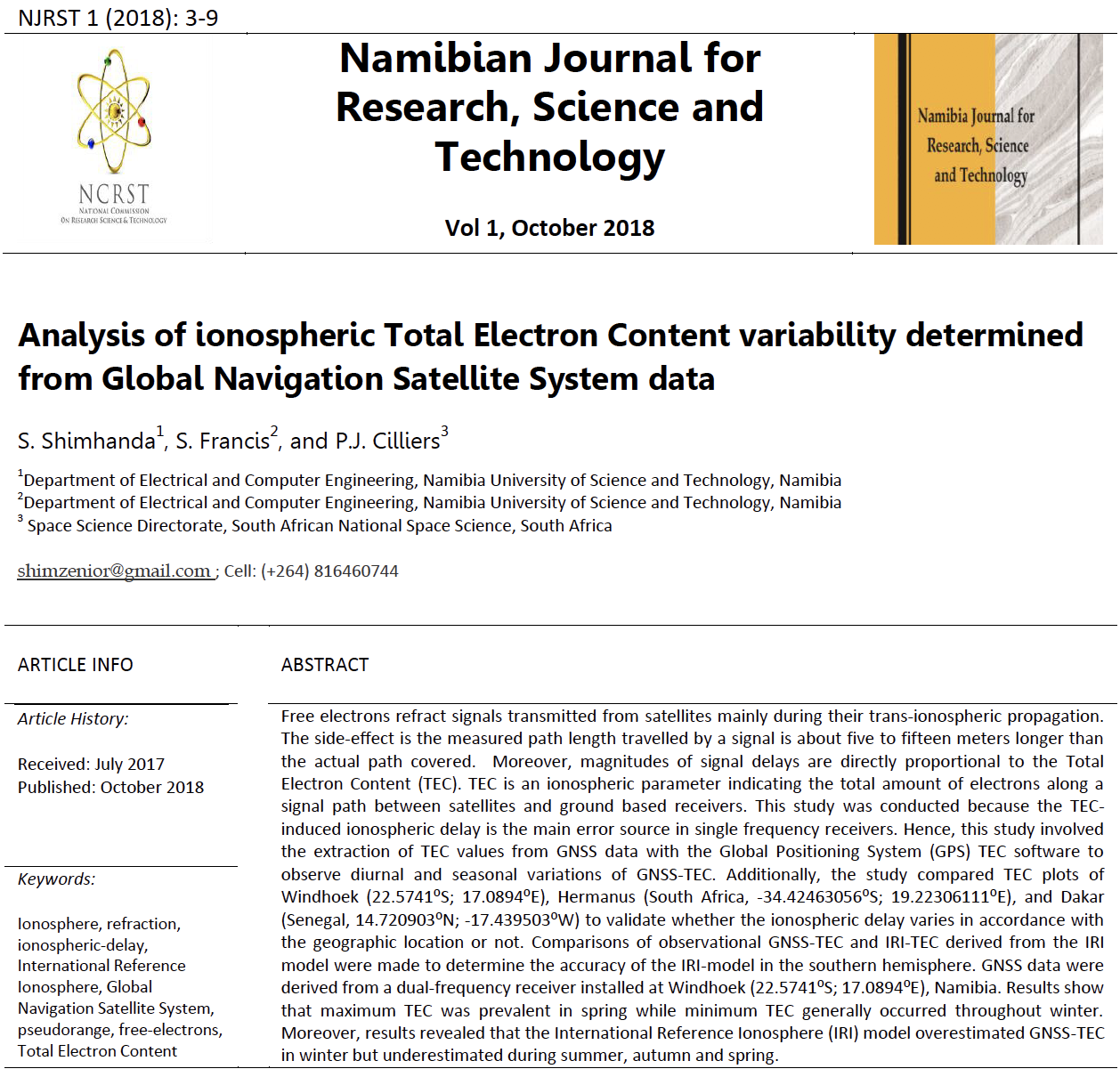Analysis of ionospheric Total Electron Content variability determined from Global Navigation Satellite System data
Main Article Content
Abstract
Free electrons refract signals transmitted from satellites mainly during their trans-ionospheric propagation. The side-effect is the measured path length travelled by a signal is about five to fifteen meters longer than the actual path covered. Moreover, magnitudes of signal delays are directly proportional to the Total Electron Content (TEC). TEC is an ionospheric parameter indicating the total amount of electrons along a signal path between satellites and ground based receivers. This study was conducted because the TEC-induced ionospheric delay is the main error source in single frequency receivers. Hence, this study involved the extraction of TEC values from GNSS data with the Global Positioning System (GPS) TEC software to observe diurnal and seasonal variations of GNSS-TEC. Additionally, the study compared TEC plots of Windhoek (22.5741?S; 17.0894?E), Hermanus (South Africa, -34.42463056?S; 19.22306111?E), and Dakar (Senegal, 14.720903?N; -17.439503?W) to validate whether the ionospheric delay varies in accordance with the geographic location or not. Comparisons of observational GNSS-TEC and IRI-TEC derived from the IRI model were made to determine the accuracy of the IRI-model in the southern hemisphere. GNSS data were derived from a dual-frequency receiver installed at Windhoek (22.5741?S; 17.0894?E), Namibia. Results show that maximum TEC was prevalent in spring while minimum TEC generally occurred throughout winter. Moreover, results revealed that the International Reference Ionosphere (IRI) model overestimated GNSS-TEC in winter but underestimated during summer, autumn and spring.
Article Details

This work is licensed under a Creative Commons Attribution 4.0 International License.

